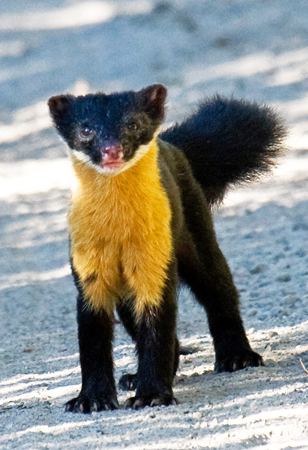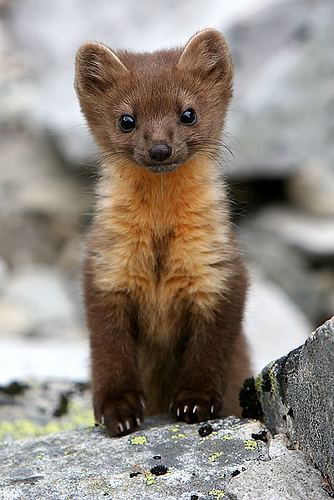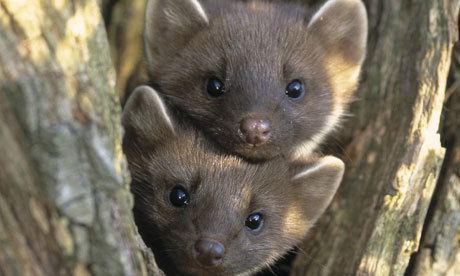Kingdom Animalia Order Carnivora Subfamily Mustelinae Scientific name Martes Higher classification Martinae | Phylum Chordata Family Mustelidae Genus Martes
Pinel, 1792 Lifespan American marten: 15 years | |
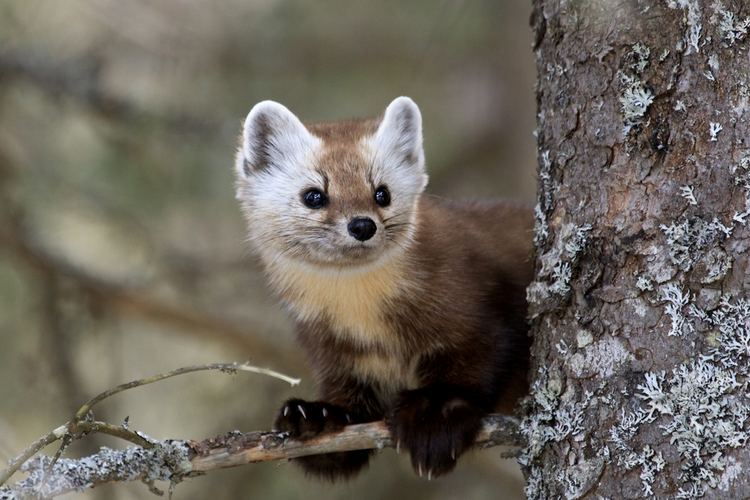 | ||
Mass Beech marten: 1.7 – 1.8 kg, American marten: 0.5 – 1.4 kg, Yellow-throated marten: 2.5 – 5.7 kg Length Beech marten: 43 – 59 cm, American marten: 50 – 70 cm, Yellow-throated marten: 50 – 72 cm Gestation period Beech marten: 236 – 237 days, American marten: 30 days Lower classifications European pine marten, Sable, Beech marten, Fisher, American marten | ||
Animal spotlight american marten
The martens constitute the genus Martes within the subfamily Mustelinae, in the family Mustelidae. Martens are slender, agile animals, adapted to living in taigas, and are found in coniferous and northern deciduous forests across the Northern Hemisphere. They have bushy tails, and large paws with partially retractible claws. The fur varies from yellowish to dark brown, depending on the species, and, in many cases, is valued by fur trappers.
Contents
- Animal spotlight american marten
- The pine marten is nature s most adorable assassin
- Etymology
- Diet
- Behavior
- Species
- References
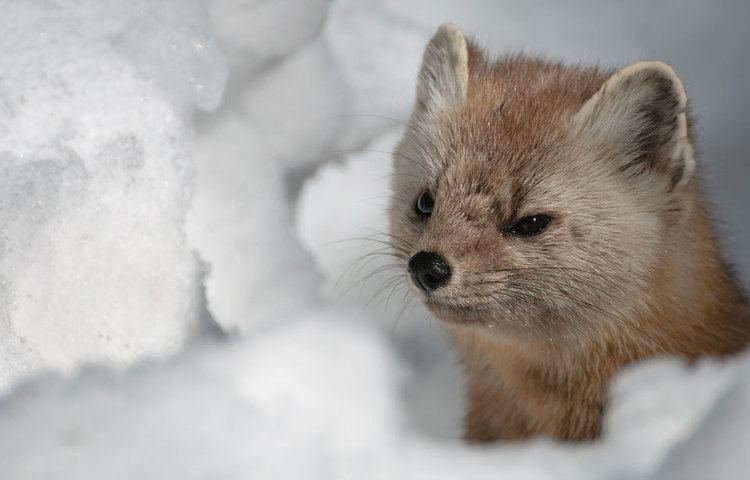
The pine marten is nature s most adorable assassin
Etymology
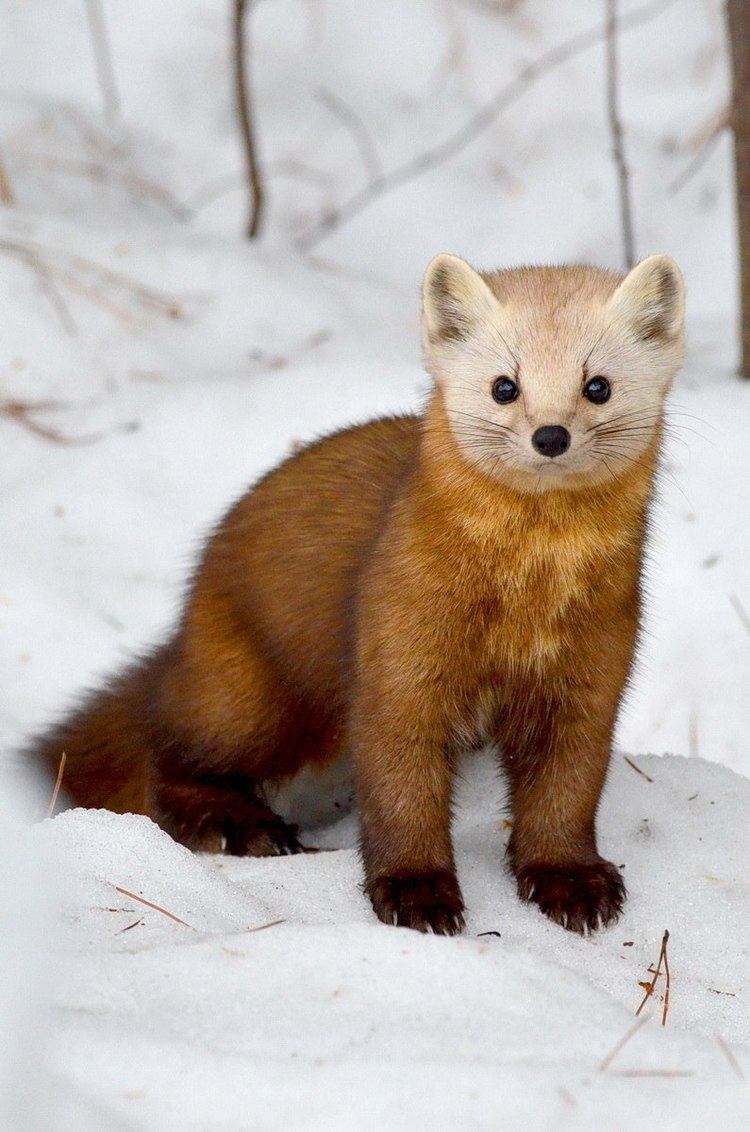
The Modern English marten comes from the Middle English martryn, in turn borrowed from the Anglo-French martrine and Old French martre (Latin martes), itself from a Germanic source; cf. Old English mearþ, Old Norse mörðr, and Old High German and Yiddish מאַרדאַר mardar.
Diet
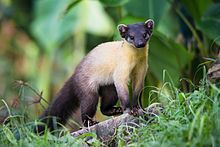
Martens are omnivorous animals related to wolverines, minks, badgers, ferrets, and weasels. Their diet consists of squirrels, mice, rabbits, birds, fish, insects, and eggs, and they will also eat fruit and nuts when these are available.
Behavior
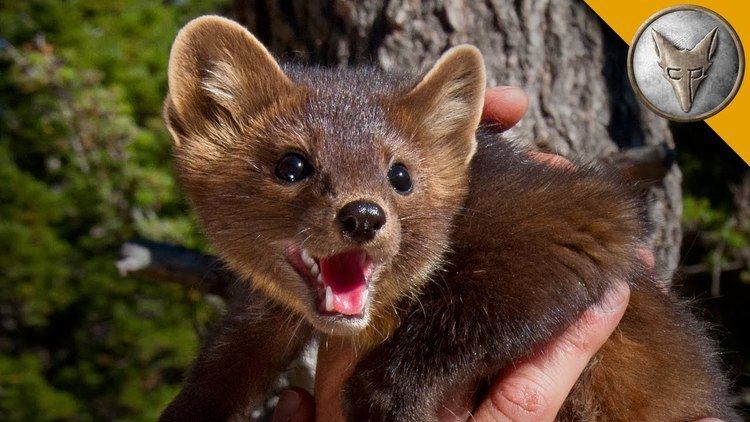
Martens are solitary animals, meeting only to breed in late spring or early summer. Litters of up to five blind and nearly hairless kits are born in early spring. They are weaned after around two months, and leave the mother to fend for themselves at about three to four months of age. Due to their habit of seeking warm and dry places and to gnaw on soft materials, martens cause damage to soft plastic and rubber parts in cars and other parked vehicles, annually costing millions of euros in Central Europe alone, thus leading to the offering of marten-damage insurance, "marten-proofing", and electronic repellent devices.
Species
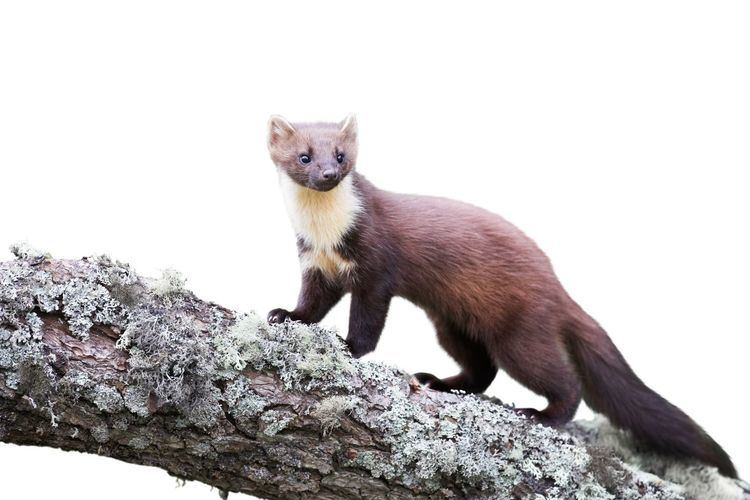
Recent DNA research has shown that the genus Martes is in fact polyphyletic, placing Martes pennanti – and in some studies, Martes americana – outside the genus and allying it with Eira and Gulo, to form a new New World clade. The genus first evolved up to seven million years ago during the Miocene epoch.
